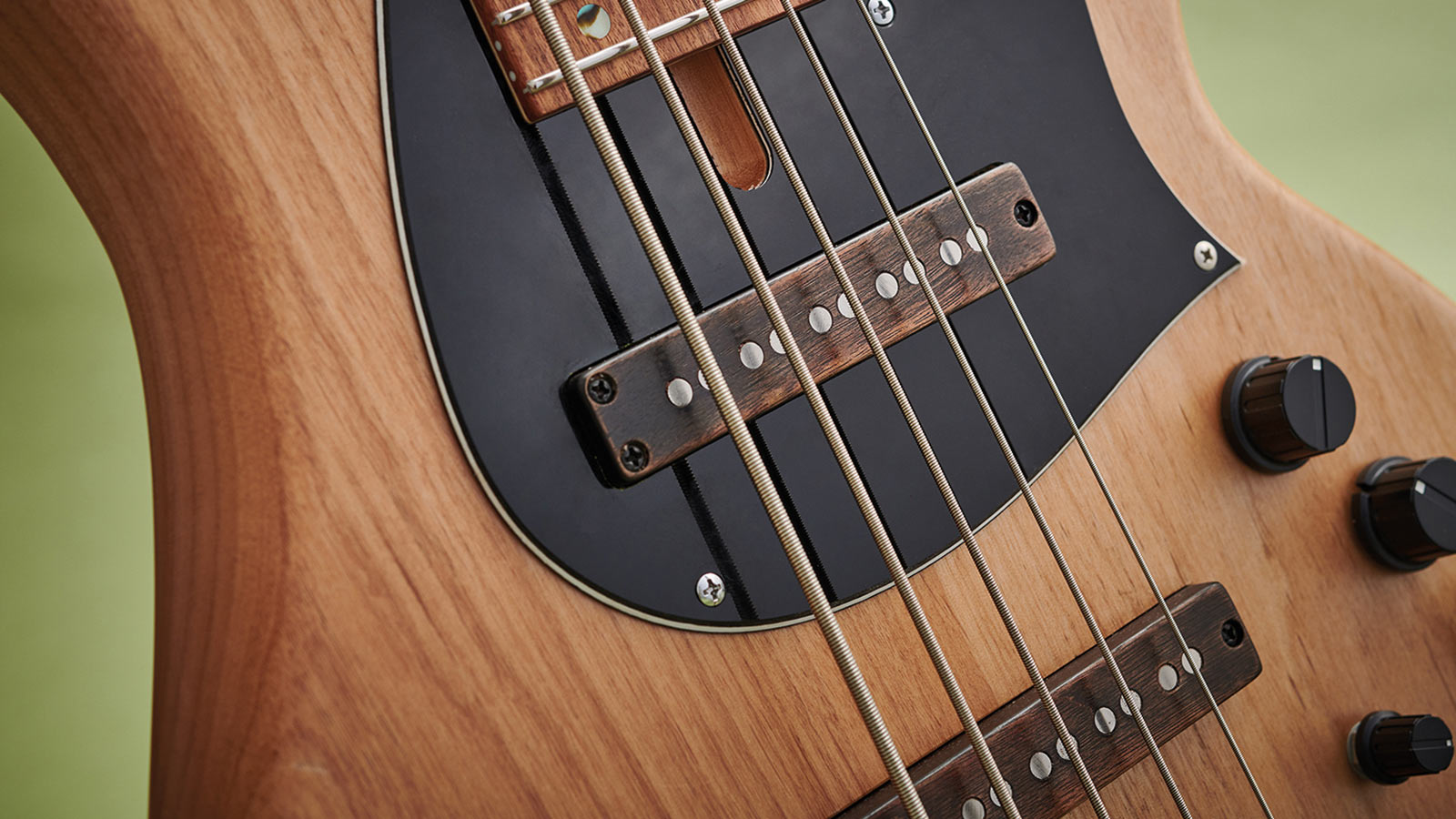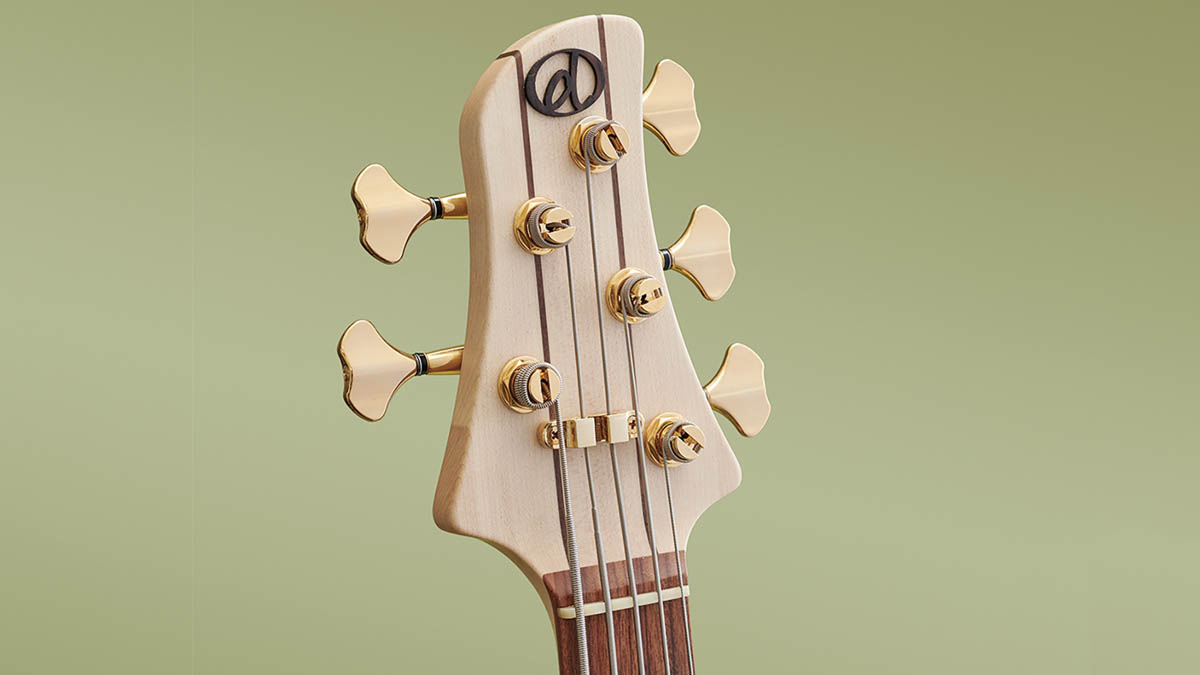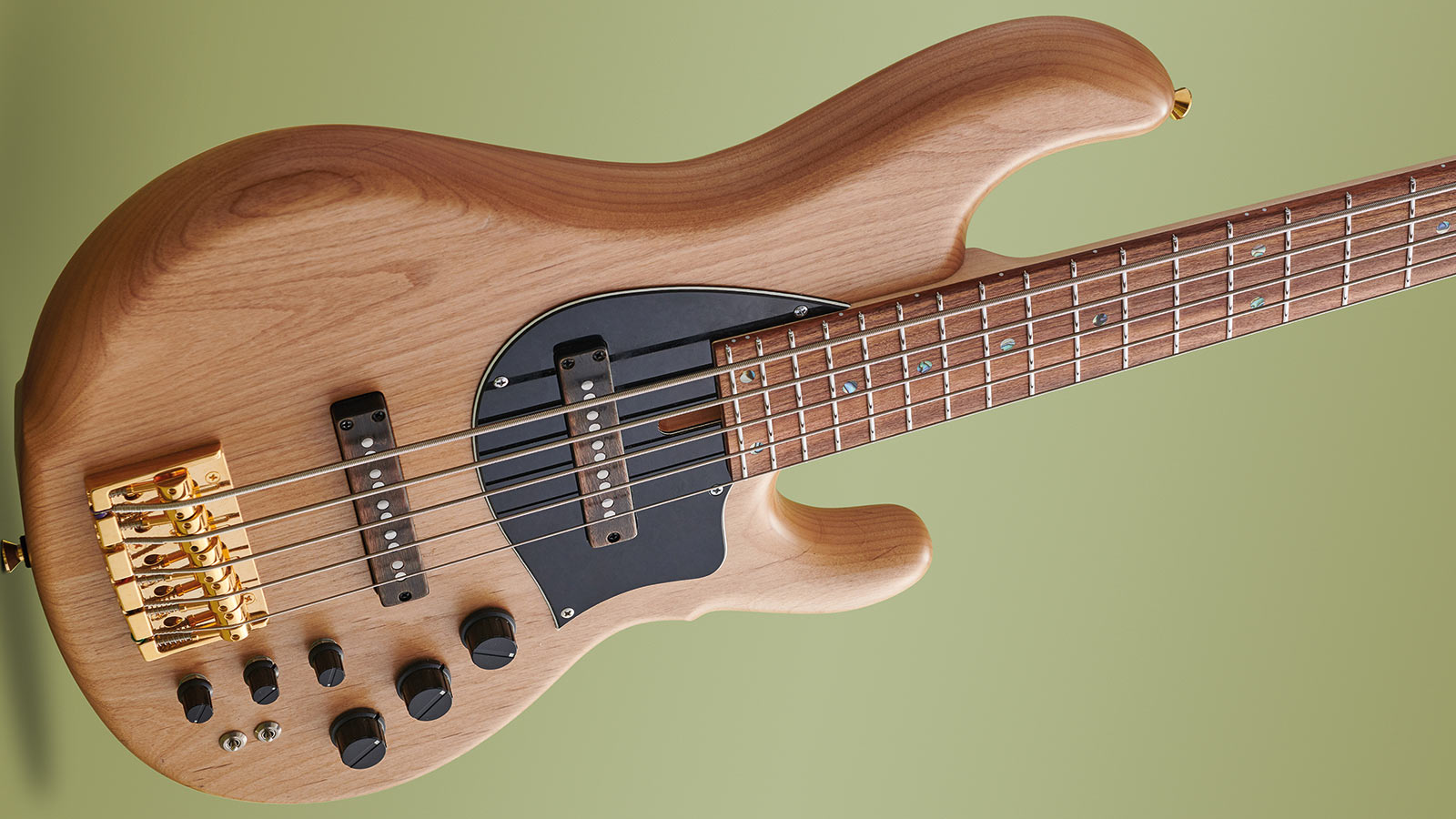Guitar World Verdict
An interesting custom bass with much going for it.
Pros
- +
Tonal options make it a good fit for many styles.
- +
Construction.
- +
Finish.
Cons
- -
The treble EQ is a little muted and the low B didn’t shine.
- -
Headstock bias.
You can trust Guitar World
The Dragonfly bass guitar brand emanates from the Harry’s Engineering company in Japan, which features bass builders who previously worked for Aria in the ’80s.
This particular model may look a little understated, but its materials, construction, finishing, and electronics package suggest otherwise, especially when it comes to coaxing some suitably impressive tones from it.
Build Quality
With a distinctive headstock design, a sweetly rounded body shape and an extensive lower cutaway that offers easy access to the upper frets, the Dragonfly’s physical attributes are enticing. The body contouring is limited, to say the least, with only slight rear shaping and none at all to the upper body bout on the front facing.
However, the bass feels solidly constructed and well-assembled and, weighing in at 8.6 pounds (3-9 kilograms), it’s no back-breaker, which isn’t always the case with five-strings. The bass has an organic feel, reinforced by the satin finish applied to the two-piece maple body timber and maple and walnut laminated neck.
The level of finishing from top to bottom is very impressive
The maple and walnut neck features a shallow D-shaped profile and as far as five-string necks go, is very comfortable to play – it fits like a glove. The 48mm nut width suggests a broad pau ferro fingerboard, but it works due to the slim profile and this, coupled with 19mm string spacing at the bridge, makes for a very comfortable playing experience.
The level of finishing from top to bottom is very impressive and, no sharp frets along either edge of the neck, player comfort is reinforced with a high level of playability.
The inclusion of the three-ply black scratchplate, abalone position markers with white dots on the side of the neck, and gold Gotoh hardware gives the whole instrument a somewhat traditional vibe, with a foot in the glamor stakes.
The hardware does what it should, with the bridge offering through-body and top-loading stringing, and feels and operates solidly, giving the impression of reliability that you would expect from Gotoh.
Don’t be put off by the extensive control layout, as it’s easier to navigate than you might expect, with volume, pickup balance and tone controls, alongside a three-band EQ and active/passive and mid-frequency switches.

Sounds And Playability
With its maple, walnut and pau ferro timbers, you would expect this bass to offer plenty of bounce and brightness in its natural tone characteristics. Those elements certainly come across, although the walnut and pau ferro contribute a smoother, less harsh element to the tone.
Plugged into an amp with the EQ set flat both there and on the bass, the Dragonfly exhibits a lively resonance and strong sustain. The DFSB single-coil pickups offer a warm bite when panned centrally, while the neck-biased unit sounds well-rounded but with the familiar single-coil spring in its step.
The bass EQ is solid and powerful, while both mid-frequency options give the bass a broad palette of options and a significant growl
The bridge unit sounds vibrant with the characteristic mid-bias you might expect, but it never sounds thin. The three-band EQ is something of a mixed bag: The bass EQ is solid and powerful, while both mid-frequency options give the bass a broad palette of options and a significant growl.
However, the treble EQ is very polite, rather too much so. If you require a cutting, glassy top end, you may be disappointed. The passive options are strong, though, and the passive tone control is beneficial in giving the player usable tones with varying degrees of light and shade.

String and note volume across the whole neck is consistent, although the low B string’s performance is a little woolly. Otherwise, the bass performs very well and should appeal to many players.
Surprisingly, for a bass under nine pounds, the Dragonfly exhibits some noticeable headstock bias: Even when placed on a strap, the bass wants to sit horizontally across the player’s body. Nevertheless, the instrument’s playability isn’t in question.
Conclusion
So, here we have a bass with some great elements, and as a whole, it’s enjoyable to play. With a few tweaks here and there, it could become more desirable. Dragonfly basses are custom-ordered instruments, so if your attention has been piqued, check online for further options for your own custom build.
Specs
- PRICE: $2600 + import taxes
- MADE IN: Japan
- COLOR: Natural, satin finish
- BODY: Maple, two-piece
- NECK: Walnut and maple, five-piece laminate, 34.5” scale, satin finish
- NECK JOINT: Bolt-on, five-bolt attachment
- NUT WIDTH: 48mm
- FINGERBOARD: Pau ferro
- FRETS: 24
- PICKUPS: Dragonfly wood-covered DFSB-4N and 4B single-coil pickups
- ELECTRONICS: Dragonfly DFB3 preamp, active, 9-volt
- CONTROLS: Volume, pickup balance, passive tone control, three-band EQ (bass/middle/ treble), active/passive switch, mid- frequency switch (300/480 Hz)
- HARDWARE: Gold hardware, Gotoh 404SJ-5 bridge, Gotoh GB707 machine heads
- WEIGHT: 8.6 lbs
- CASE/GIGBAG INCLUDED: Gigbag
- LEFT-HAND OPTION AVAILABLE: As a custom order
- CONTACT: Bass Japan
“Affordable versions of the three best basses I've ever held in my hands”: Sterling by Music Man completes its trilogy of Joe Dart signature models with a trio of made-to-order basses that cost less than $500
“The ace up the sleeve of bass players around the globe since 1978”: Tobias instruments were trailblazers in the bass world. Now they’re back as part of the Gibson family











